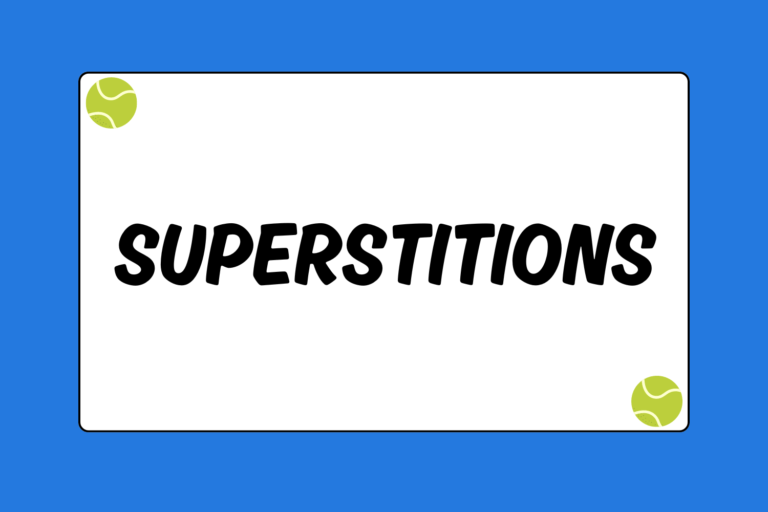Every tennis stroke involves some degree of footwork. Whether you’re springing off of the ground to serve, or exploding out of your split step to run down a drop volley, your feet quietly float around the court to make the shot possible. Elite players commit long hours to conditioning and footwork, but many players often under-train or neglect this facet of the game altogether. It’s impossible to become a dominant player, though, if you cut your training short and take the painless, less-exhausting route.
Although you take full strides when chasing down shots, tennis mainly involves short sprints and quick feet. Your workouts should mirror what you’ll see in a match, so you need to include tennis-specific exercises on your off days. This guide provides footwork and legwork drills that will make you more explosive and nimble on your feet.
Quadriceps & Glutes
Strong quads allow you to hit powerful groundstokes, but a strong lower body also helps you endure long, strenuous matches. Include the following exercises into your workout routine, and you’ll strengthen your quads and glutes:
Lunges
Lunges primarily target your quads, glutes, and thighs. Perform the following exercise with either your bodyweight, or with a dumbbell in each hand:
- Keep your hands to your sides, and start with your feet shoulder-width apart.
- Step forward with your right leg, and bend your right knee until it forms a 90-degree angle.
- Your back leg bends at the knee, as well, and it should nearly touch the floor.
- Straighten back up by bringing your back leg forward and into the standing position.
- Alternate legs, and continue for a predetermined amount of repetitions or until failure. Complete three sets.
Jump Squats
Jump squats are demanding, but they’re a great full-body workout. This bodyweight exercise should be completed as follows:
- Stand with your feet about shoulder-width apart.
- With your hands at your sides, bend your knees and lower yourself into the squat position. Keep your back straight and point your chest outwards to maintain balance.
- Explode upward, jump off of the ground, and raise your hands towards the ceiling.
- Land on your feet, and lower yourself back into the squat position as soon as your feet touch the ground. Don’t lock your knees as you land.
- Repeat for a predetermined amount of reps or until you reach exhaustion.
- Complete three or four sets.
Hot Tip: Add Resistance
You can hold a medicine ball or light dumbbells if you want to take this exercise to the next level. When bending your knees, hold the medicine ball at the center of your chest (if you’re using dumbbells, hold them to the side of your body at about shoulder-height and form 90-degree angles at the elbows), and raise them as high as you can as you explode upwards. When you land on your feet, carefully lower the weight back to the starting point, and repeat.
Hamstrings
Your knees are often bent when playing tennis, making it extremely easy for your hamstrings to tighten up during a match. Strong and flexible hamstrings keep you limber and help you reach low balls. You’ll need access to a gym for the following exercise.
Single-Leg Hamstring Curls
Leg curls target your hamstrings, and strong hamstrings are the foundation of your posterior muscles. Follow these directions to complete the exercise:
- Lie stomach-down on the leg-curl bench, and place your legs beneath the pad so that your ankles rest against it.
- With one leg, raise the weighted pad upwards as high as you can.
- Make sure your hips stay on the bench throughout the entire motion.
- Don’t use any momentum from your lower or upper body to swing the pad; instead focus on isolating the leg muscles.
- Repeat for a predetermined amount of reps or until you reach exhaustion, and then switch legs.
- Complete three or four sets on each leg.
Sprints
Tennis involves constant sprinting, and your feet should never stop moving while the ball is in play. It’s absolutely necessary to incorporate sprints into your workout if you plan on becoming a competitive player. Over time, your conditioning, speed, and explosiveness will greatly improve.
Up & Down
During a match, you sprint in all different directions — laterally, backwards, etc. — so your training needs to incorporate similar movements. The goal of this drill is to keep your heart rate up at all times — you’ll either sprint or jog, but you’ll never walk. Complete the exercise as follows:
- Line up 30 yards away from your goal line (a cone, line, etc.).
- Sprint to the finish line, turn around, and jog back to the starting point.
- Once you reach the starting point, repeat step 2.
- From the starting line, sprint backwards (with your back to the finish line) to the end marker, and then jog backwards to the starting line.
- Once you reach the starting point, repeat step 4.
- From the starting line, turn sideways and sidestep sprint to the finish line. Keep your knees bent, and sidestep as fast as you can.
- Once you reach the finish line, sidestep sprint back to the beginning, but lead with your opposite foot.
- Repeat steps 6 and 7.
- From the starting line, line up sideways and sprint to the finish line using crossover steps (also referred to as karaoke).
- Once you reach the finish line, sprint back to the beginning using crossover steps, but lead with your opposite foot.
- Repeat steps 9 and 10.
Depending on your conditioning level, this drill should be exhausting. Add more sets if necessary, or if you want to intensify your workouts. As you continue training, you should be able to explode out of your split step and move to the ball with much more ease.
Boot Camp
If you’re serious about becoming a competitive player, you need to dedicate yourself to conditioning and footwork — especially on off days when you’re not playing tennis. You don’t want to overload yourself before a match, though, because you’ll likely be sore, tired, or both once you increase the intensity of your workouts. You’ll notice improvements after a few weeks, but the real payoff will come a few months down the road when you transform into an untiring and relentless opponent.





